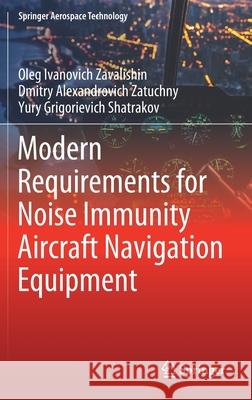Modern Requirements for Noise Immunity Aircraft Navigation Equipment » książka
topmenu
Modern Requirements for Noise Immunity Aircraft Navigation Equipment
ISBN-13: 9789811600722 / Angielski / Twarda / 2021 / 198 str.
Modern Requirements for Noise Immunity Aircraft Navigation Equipment
ISBN-13: 9789811600722 / Angielski / Twarda / 2021 / 198 str.
cena 564,88
(netto: 537,98 VAT: 5%)
Najniższa cena z 30 dni: 539,74
(netto: 537,98 VAT: 5%)
Najniższa cena z 30 dni: 539,74
Termin realizacji zamówienia:
ok. 22 dni roboczych.
ok. 22 dni roboczych.
Darmowa dostawa!
Kategorie:
Kategorie BISAC:
Wydawca:
Springer
Seria wydawnicza:
Język:
Angielski
ISBN-13:
9789811600722
Rok wydania:
2021
Wydanie:
2021
Numer serii:
000388331
Ilość stron:
198
Waga:
0.47 kg
Wymiary:
23.39 x 15.6 x 1.27
Oprawa:
Twarda
Wolumenów:
01
Dodatkowe informacje:
Wydanie ilustrowane











